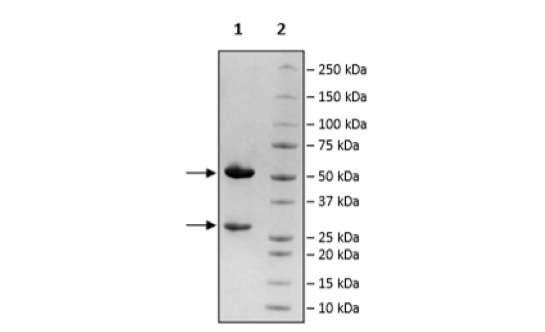Anti-BAFF Neutralizing Antibody
This anti-BAFF antibody is a purified, recombinant monoclonal antibody that recognizes human BAFF (TNF family ligand B-cell Activating Factor). This antibody has been tested for neutralization of BAFF interaction with BAFFR in a binding assay.
≥90%
Aqueous buffer solution.
8 mM phosphate, pH 7.4, 110 mM NaCl, 2.2 mM KCl, and 20% glycerol
The BAFF (TNF family ligand B-cell Activating Factor), also known as BLyS, TALL-1 or CD257, is encoded by the TNFSF13B gene and is a Type II membrane-bound protein, which can be released as a soluble ligand upon proteolytic processing. This cytokine is a ligand for the receptors Transmembrane Activator and CAML Interactor (TACI or TNFRSF13B), BAFF Receptor (BAFFR, or TNFRSF13C) and B-cell Maturation Antigen (BCMA, TNFRSF17). These interactions promote cell survival and play a crucial role in B cell development. In particular, BAFFR signaling is an important player in the later stages of B cell differentiation, including the survival of long-lived bone marrow plasma cells and likely for the survival of plasma blasts. BAFF signaling is also required for CCL (chronic lymphocytic leukemia) cell survival. Binding of BAFF to BAFFR results in the degradation of TRAF3 (TNF receptor associated factor 3), which stops the inhibition of SYK and results in activation of pathways necessary for B cells. It also activates the non-canonical slow NF-κB2-dependent pathway, which relies on the activation of NIK (NF-κB-inducing kinase). Targeting BAFF-BAFFR will open new therapeutic avenues in diseases related to these proteins.



